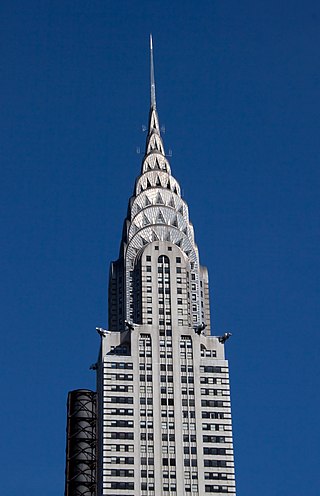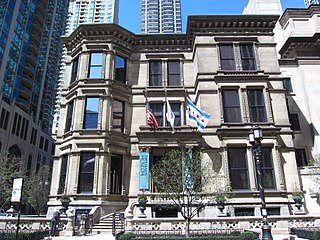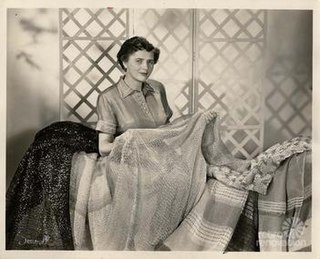Related Research Articles

Art Deco, short for the French Arts décoratifs, is a style of visual arts, architecture, and product design, that first appeared in Paris in the 1910s, and flourished in the United States and Europe during the 1920s to early 1930s. Through styling and design of the exterior and interior of anything from large structures to small objects, including how people look, Art Deco has influenced bridges, buildings, ships, ocean liners, trains, cars, trucks, buses, furniture, and everyday objects including radios and vacuum cleaners.

Interior design is the art and science of enhancing the interior of a building to achieve a healthier and more aesthetically pleasing environment for the people using the space. With a keen eye for detail and a creative flair, an interior designer is someone who plans, researches, coordinates, and manages such enhancement projects. Interior design is a multifaceted profession that includes conceptual development, space planning, site inspections, programming, research, communicating with the stakeholders of a project, construction management, and execution of the design.

Émile-Jacques Ruhlmann, , was a French furniture designer and interior decorator, who was one of the most important figures in the Art Deco movement. His furniture featured sleek designs, expensive and exotic materials and extremely fine craftsmanship, and became a symbol of the luxury and modernity of Art Deco. It also produced a reaction from other designers and architects, such as Le Corbusier, who called for simpler, functional furniture.

Florence Marguerite Knoll Bassett was an American architect, interior designer, furniture designer, and entrepreneur who has been credited with revolutionizing office design and bringing modernist design to office interiors. Knoll and her husband, Hans Knoll, built Knoll Associates into a leader in the fields of furniture and interior design. She worked to professionalize the field of interior design, fighting against gendered stereotypes of the decorator. She is known for her open office designs, populated with modernist furniture and organized rationally for the needs of office workers. Her modernist aesthetic was known for clean lines and clear geometries that were humanized with textures, organic shapes, and colour.

The International Exhibition of Modern Decorative and Industrial Arts was a specialized exhibition held in Paris, France, from April to October 1925. It was designed by the French government to highlight the new modern style of architecture, interior decoration, furniture, glass, jewelry and other decorative arts in Europe and throughout the world. Many ideas of the international avant-garde in the fields of architecture and applied arts were presented for the first time at the exposition. The event took place between the esplanade of Les Invalides and the entrances of the Grand Palais and Petit Palais, and on both banks of the Seine. There were 15,000 exhibitors from twenty different countries, and it was visited by sixteen million people during its seven-month run. The modern style presented at the exposition later became known as "Art Deco", after the exposition's name.
The set decorator is the head of the set decoration department in the film and television industry, responsible for selecting, designing, fabricating, and sourcing the "set dressing" elements of each set in a Feature Film, Television, or New Media episode or commercial, in support of the story and characters of the script. The set decorator is responsible for each décor element inside the sets, from practical lighting, technology, art, furniture, drapery, floor coverings, books, collectables, to exterior furnishings such as satellite dishes, Old West water troughs, streetlamps, traffic lights, garden furniture and sculptures.

Lilly Reich was a German designer of textiles, furniture, interiors, and exhibition spaces. She was a close collaborator with Ludwig Mies van der Rohe for more than ten years during the Weimar period from 1925 until his emigration to the U.S. in 1938. Reich was an important figure in the early Modern Movement in architecture and design. Her fame was posthumous, as the significance of her contribution to the work of Mies van der Rohe and others with whom she collaborated with only became clear through the research of later historians of the field.

Paul T. Frankl, an Art Deco furniture designer and maker, architect, painter and writer from Vienna, Austria, was the son of a wealthy real estate speculator.

Dorothy Wright Liebes was an American textile designer and weaver renowned for her innovative, custom-designed modern fabrics for architects and interior designers. She was known as "the mother of modern weaving".

Jack Lenor Larsen was an American textile designer, author, collector and promoter of traditional and contemporary craftsmanship. Through his career he was noted for bringing fabric patterns and textiles to go with modernist architecture and furnishings. Some of his works are part of permanent collections at prominent museums including Museum of Modern Art, Victoria and Albert Museum, Art Institute of Chicago,Musée des Arts Décoratifs at the Louvre, and the Minneapolis Institute of Art, which has his most significant archive.
F. Schumacher & Co. is a privately held company based in New York City and Fort Mill, South Carolina, that designs products for the interior design industry in the United States. Established in 1889 by Frederic Schumacher, F. Schumacher & Co. is a fifth generation business and the only supplier of decorative textiles from the 19th century still privately owned and managed by direct descendants of its founder. The company sells fabric, wall covering, trimming, floorcovering, finished goods, paint, as well as print media, social and digital platforms under five brands, Schumacher, Patterson Flynn Martin, Backdrop, Freddie and Frederic. F. Schumacher & Co. currently maintains 18 showrooms in several countries and sells to the interior design trade.
Samuel Marx (1902–1992) was an American film producer and writer.
Frances Adler Elkins, was one of the twentieth century's most prominent interior designers. According to one magazine editor, she was "the first great California decorator". According to The New York Times, Elkins "pioneered vibrant interiors, in which solid historical references met effervescent modernist fantasy." She was the sister of the architect David Adler.

The Richard H. Driehaus Museum is a museum located at 40 East Erie Street on the Near North Side in Chicago, Illinois, near the Magnificent Mile. The museum is housed within the historic Samuel M. Nickerson House, the 1883 residence of a wealthy Chicago banker. Although the mansion has been restored, the Driehaus Museum does not re-create the Nickerson period but rather broadly interprets and displays the prevailing design, architecture, and decorating tastes of Gilded Age America and the art nouveau era in permanent and special exhibitions.
Nancy Vincent McClelland (1877–1959) was the first female president of the first US national association of interior designers, the American Institute of Interior Decorators (A.I.D), which is now called the American Society of Interior Designers (A.S.I.D.) and was one of an early group of female interior decorators practicing during the first decades of the 20th century. McClelland was also an expert on the European/American antiques. She was a writer for interior journals such as: Collier's, Country Life, House Beautiful, and House and Garden. She was an expert on wallpaper and the Scottish furniture designer Duncan Phyfe of New York. She received several rewards for her work. Being multilingual gave her the opportunity to be internationally active and to be known beyond the US as a writer, speaker, interior decorator, wallpaper designer, and collector of antique furniture. She traveled widely and met figures of the time such as Picasso.

Maria Kipp (1900–1988) was a German-born American textile designer and engineer active in the United States from the 1920s until her death. Her commissions ranged from the Salt Lake Temple in Salt Lake City to Air Force One.
Paul Tuttle was an American designer known primarily for his work in furniture design, and secondarily for his work in interior design and architectural design. Tuttle had no formal education in design, instead drawing influence from his own experience and the mentorship of well known designers such as Alvin Lustig, Welton Becket, and Frank Lloyd Wright. Tuttle designed furniture for over 50 years, resulting in a body of work that included both manufactured and custom made furniture.
Pierre Patout (1879-1965) was a French architect and interior designer, who was one of the major figures of the Art Deco movement, as well as a pioneer of Streamline Moderne design. His works included the design of the main entrance and the Pavillion d'un Collecteur at the International Exhibition of Modern Decorative and Industrial Arts in Paris in 1925, and the interiors of the ocean liner Normandie and other French transatlantic liners in the 1930s.
Wolfgang Hoffmann (1900–1969) was an Austrian-American architect and designer active in the American modernism movement between 1926 and 1942. His reputation was overshadowed by that of his father, the architect and designer Josef Hoffmann, and ex-wife, Josefine Pola Weinbach Hoffmann, better known as Pola Stout.

George Mann Niedecken was an American prairie style furniture designer and interior architect from Milwaukee, Wisconsin. He is best known for his collaboration with the architect Frank Lloyd Wright. He also designed interiors for Marion Mahony Griffin who was one of the first female architects.
References
- ↑ American Jewish Archives: "Marx, Samuel Abraham; b. Natchez, Aug 27 1885; d. Jan 1964" p. 423
- ↑ Ultramodern, Samuel Marx : Architect, Designer, Art Collector, Liz O'Brien, Pointed Leaf Press, December 2007, ISBN 0-9777875-2-4
- ↑ Brenner, Douglas (7 October 2007). "Marxism". The New York Times.
- ↑ "Vanishing STL: The Ghost of Christmas Past: The Fall of the May Legacy in St. Louis". 19 December 2008.